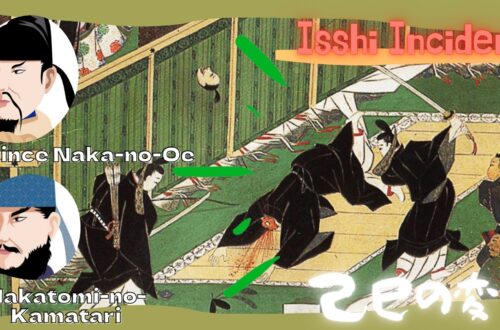
#25 The Edo Shogunate
Click here to go to the YouTube Video

As you know, the current capital of Japan is Tokyo. With a population of 14 million, Tokyo is a world-class metropolis and the political, economic, and cultural center of Japan. In this episode, we will look at how the Edo period (1603-1867) began, which triggered the development of Tokyo.
ご存知のように東京は現在の日本の首都です。14,000,000 人の人口を持つ世界的な大都市で、日本の政治、経済、文化の中心です。今回は東京の発展のきっかけとなった江戸時代がどのように始まったのかを見ていきましょう。

After the death of Toyotomi Hideyoshi, Tokugawa Ieyasu, based in the Kanto region, rose to power and came into conflict with Ishida Mitsunari, who was trying to protect the Toyotomi regime. In 1600, the two sides clashed in the Battle of Sekigahara, which Ieyasu won. Then in 1603, the Imperial Court appointed Ieyasu as the Seii Taishogun, and he established the shogunate in Edo (present-day Tokyo).
豊臣秀吉の死後、関東を拠点とする徳川家康が勢いを強め、豊臣政権を維持しようとする石田三成と対立しました。両者は 1600 年に関ヶ原の戦いで激突し、家康が勝利します。1603 年、朝廷は家康を征夷大将軍に任命し、家康は江戸に幕府を開きました。

Even after Ieyasu established the shogunate in Edo, the Toyotomi family, based in Osaka Castle, remained powerful. Ieyasu succeeded in destroying the Toyotomi family at Osaka Castle in two separate attacks, in the winter of 1614 and the following summer.
家康が江戸に幕府を開いた後も、大阪城を拠点とする豊臣家は依然として強力な力を持っていました。家康は1614年の冬、そして翌年の夏と2度の攻撃で大阪城の豊臣家を滅ぼすことに成功しました。

Based in Edo, the Tokugawa family meticulously established themselves to rule the whole country. They divided the feudal lords of the country into three categories. The first was their own relatives or Shinpan; the second was their old vassals or Fudai Daimyo, and the third was the outlying feudal lords or Tozama Daimyo who had been their enemies until the Battle of Sekigahara.
江戸を拠点とする徳川家は細心の注意を払って全国を支配する体勢を整えました。彼らは全国の大名を3つのカテゴリーに分けました。一つは自分たちの親族である親藩、そして2つ目は古くからの家臣である譜代大名、3つ目は関ヶ原の戦いまで敵だった外様大名です。

The trusted Shinpans and Fudai Daimyos were located around Edo and other important areas. Tozama Daimyos were placed in remote areas far from Edo. The Tokugawa family enhanced the defense of Edo by arranging the feudal lords in this way.
信頼のおける親藩と譜代大名は江戸周辺や重要地に配置しました。そして外様大名は江戸から遠い僻地に配置しました。徳川家はこのように大名を配置することで江戸の防衛力を高めました。

The Tokugawa family established the Buke Shohatto, the law of the feudal lords, which prohibited the construction of new castles and large ships by all the feudal lords in the country. They also forbade feudal lords from associating with each other by marriage without the shogun’s permission.
徳川家は大名の法律である武家諸法度を定め、全国の大名が新たに城や大型の船を建設することを禁じました。また、将軍の許可なく大名同士が婚姻によって結びつくことを禁じました。

During the reign of the third Shogun, Iemitsu, the Buke Shohatto was strengthened, and Sankinkotai, a system of daimyo’s visits to the shogunate was established. This required all feudal lords throughout Japan to have their wives and children reside in Edo and travel back and forth between their domains and Edo every other year to assist in the construction of Edo Castle and other projects. This placed a heavy financial burden on the feudal lords, especially Tozama Daimyos.
3代将軍家光の時には武家諸法度が強化され、参勤交代の制度が設けられました。これにより全国の大名は妻子を江戸に住まわせ、1年おきに自分の領地と江戸を往復し、江戸城の建設などに協力しなければならなくなりました。これは特に外様大名には大きな経済的負担となりました。

With this ingenious system in place, the Tokugawa family, led by the shogun, became the absolute rulers of the entire country. For nearly 260 years afterward, Japan was to enjoy a period of peace.
巧妙な体制を敷いたことで、将軍を中心とする徳川家は絶対的な力を持ち、全国を支配しました。以後、260年近くの間、日本は平和な時代が続くことになりました。
Thank you for reading.




One Comment
Pingback: